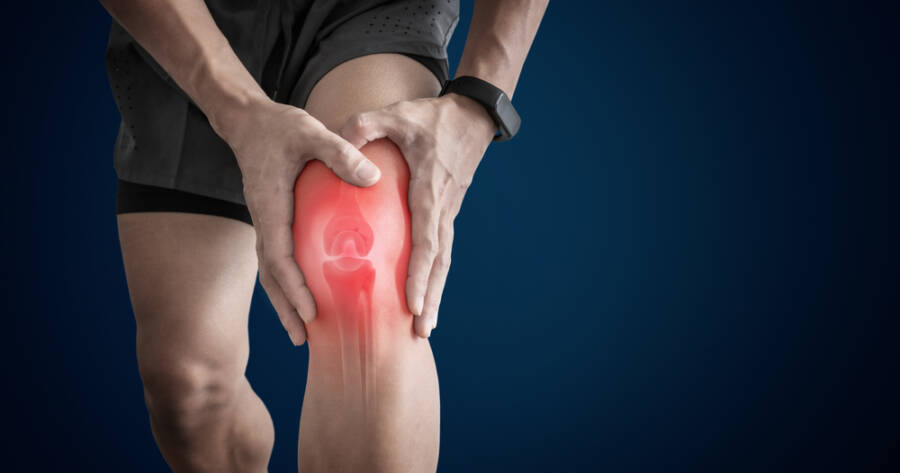Knee arthritis is a common condition that affects millions of people worldwide, causing pain, stiffness, and swelling in the knee joint. It occurs when the cartilage in the knee deteriorates, leading to inflammation and discomfort. This condition can severely limit mobility, making it difficult to perform daily activities such as walking, climbing stairs, or even standing for long periods of time. While knee arthritis is often associated with aging, it can also affect younger individuals due to injury or genetic factors. Fortunately, there are several treatment options available to help manage symptoms, reduce pain, and improve overall knee function.
Understanding Knee Arthritis
Knee arthritis can take two primary forms:
- Osteoarthritis (OA): This is the most common type of knee arthritis and occurs when the cartilage that cushions the knee joint breaks down over time. OA typically develops gradually and is more common in older adults. The loss of cartilage causes bones to rub together, leading to pain, swelling, and reduced range of motion.
- Rheumatoid Arthritis (RA): RA is an autoimmune disorder in which the body’s immune system attacks the joints, including the knees. This type of arthritis is less common but can lead to joint damage and inflammation in younger people, often starting in the middle age.
Symptoms of knee arthritis include pain, swelling, stiffness, limited range of motion, and difficulty walking. These symptoms can vary in severity, and while they may be manageable in the early stages, they often progress over time without proper treatment.
Non-Surgical Treatments for Knee Arthritis
For individuals with mild to moderate knee arthritis, non-surgical treatments can help manage symptoms and delay the need for more invasive interventions.
1. Pain Management
One of the first steps in treating knee arthritis is pain management. Over-the-counter (OTC) medications such as acetaminophen (Tylenol) or nonsteroidal anti-inflammatory drugs (NSAIDs) like ibuprofen (Advil) or naproxen (Aleve) can help reduce pain and inflammation. Topical creams or gels containing capsaicin or menthol can also provide localized relief.
In some cases, a doctor may recommend stronger prescription medications, such as corticosteroids or pain relievers, for more intense flare-ups.
2. Physical Therapy
Physical therapy is an essential part of managing knee arthritis. A physical therapist can design an exercise program tailored to the individual’s needs to help strengthen the muscles around the knee joint, improve flexibility, and enhance overall function. Strengthening the quadriceps, hamstrings, and calf muscles can reduce the stress placed on the knee, providing better support and reducing pain.
Therapy may also include stretching exercises to improve range of motion and flexibility, which can help alleviate stiffness in the joint.
3. Knee Braces and Supports
Knee braces and supports can provide additional stability and reduce the strain on the joint. They are often recommended for individuals with moderate arthritis who need added support during physical activity or walking. Custom-made braces or off-the-shelf options can help reduce knee movement and alleviate discomfort by redistributing weight and improving alignment.
4. Injections
For individuals who experience significant pain, injections may offer relief. Two common types of injections include:
- Corticosteroid Injections: These injections deliver powerful anti-inflammatory medication directly into the knee joint, offering temporary relief from swelling and pain. While corticosteroid injections are effective, they are typically used sparingly, as overuse can cause joint damage over time.
- Hyaluronic Acid Injections: Hyaluronic acid is a naturally occurring substance in the knee joint that helps lubricate and cushion the area. Injections of hyaluronic acid can help reduce friction and provide relief from pain by improving the lubrication in the knee joint. These injections may offer longer-lasting relief compared to corticosteroids.
Surgical Treatments for Knee Arthritis
When non-surgical treatments no longer provide adequate relief, surgical options may be considered, particularly for individuals with severe knee arthritis.
1. Knee Arthroscopy
In some cases, knee arthroscopy can be used to remove damaged tissue or smooth rough surfaces in the knee joint. This minimally invasive surgery involves inserting a small camera (arthroscope) into the knee through small incisions. It is generally used for individuals with localized knee arthritis where cartilage damage is confined to specific areas.
2. Partial Knee Replacement
Partial knee replacement, also known as unicompartmental knee arthroplasty, is an option for individuals whose arthritis is confined to one part of the knee. In this procedure, only the damaged portion of the knee joint is replaced with a prosthetic implant. It offers a quicker recovery time and less invasive surgery compared to total knee replacement.
3. Total Knee Replacement
Total knee replacement (TKR) is a more extensive surgical procedure, typically recommended for individuals with advanced knee arthritis affecting the entire joint. In TKR, the damaged cartilage and bone are removed, and the knee is replaced with a metal and plastic implant. TKR has a high success rate and can provide long-lasting relief for individuals with severe arthritis, improving mobility and reducing pain.
Effective Treatment Options for Knee Arthritis and Improved Mobility
Knee arthritis can be a debilitating condition, but a range of treatments are available to manage symptoms and improve the quality of life. From pain relief medications and physical therapy to injections and surgery, there are various options to help reduce inflammation, restore joint function, and maintain mobility. Early intervention is crucial to slow the progression of the disease and minimize joint damage. Whether through non-surgical approaches or advanced surgical treatments, individuals with knee arthritis can find effective solutions to lead active, pain-free lives.

